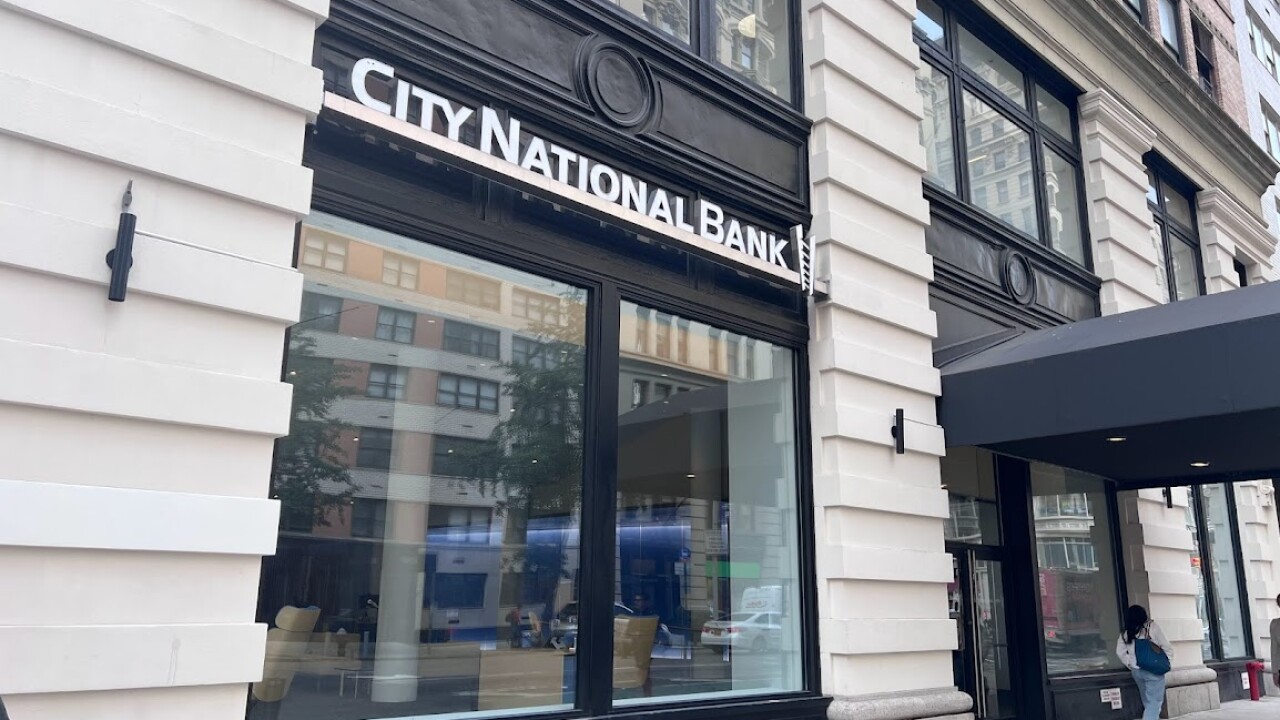
Real-time payments are gradually gaining traction in the U.S, though adoption in America still trails countries such as
"It's going to be up to the banks, financial institutions and technology companies that offer the software to create capabilities that take the effort and onus off of end users," said Carl Slabicki, executive platform owner for treasury services at BNY Mellon, noting that an easier user experience is essential to attracting consumers and businesses. There are several real-time payment options in the U.S., including The Clearing House's RTP network and the Federal Reserve's FedNow, though there is a stubborn lack of
"It would make things much easier if these rails were interoperable," said Erika Baumann, director of commercial banking, payments and health care payments at Datos Insights.
Research shows burgeoning demand for real-time payments. Thirty-three percent of American banks and credit unions offer FedNow, and 38% offer The Clearing House's RTP network, according to
Real-time transactions in the U.S. are on pace to grow from 1.4 billion in 2021 to 11.4 billion in 2026, according to
That compares to Brazil, where 95% of new customers at merchants use Pix, the national real-time rail, which passed debit and credit cards in volume in 2023, according to
Asking for real-time payments
Request for Pay (or RfP) is one option to boost adoption in the U.S., according to BNY Mellon's Slabicki.
The strategy is to link funding for brokerage accounts, monthly bills and other recurring payments to instant settlement. That can create habits that could spur adoption for other uses. While RfP is not a new product, as more billers and consumers become aware of real-time payments, RfP can be used as an introduction to the instant payment option, according to Slabicki.
RfP's other adopters include
For billers, RfP provides more control over when a bill gets delivered to consumers and when the payment is processed, Slabicki said. "The consumer ID matches the bill and what account to apply it to instantly. So there's no question about the terms of reconciliation."
There has been strong uptake of RfP over the past two years, according to BNY Mellon, which connects billers and banks, including
"The success rate has been a little lower for billing, but that's to be expected given the number of options consumers have to push or to schedule payments," Slabicki said. "RfP used in the account-to-account funding use case has shown stronger completion rates compared to bill pay to date. While it is preliminary to draw conclusions because a lot of things are at play, standardization of user experiences across different banks is still a work in progress, and enrollment processes on the biller side are different."
The funding use case has certain advantages to reach higher completion rates, Slabicki said. The main difference is the individual has triggered that account funding request versus the biller requesting it as part of their process to collect receivables, among many other payment options the consumer might have at their disposition, he said.
"It is a developing space, and we believe that with improved enrollment processes and embedding of these functionalities in the biller apps, we should see completion results that are closer to the funding use case," Slabicki said
To further boost adoption, BNY Mellon has upgraded the technology behind RfP to make it easier for billers and financial institutions to connect, eliminating the need for each biller and bank to make individual connections.
"The user and biller can go online and view the balance right away," Slabicki said. "There is no latency there. You can see the cash flow and cash positions."
Who wants real-time payments?
There is "considerable interest" among banks and credit unions to adopt multiple faster payment services that run on bank-supported payment rails — specifically Zelle, Same Day ACH, RTP and the FedNow network — wrote Michael Moeser, senior content strategist at Arizent, in a recent payments report.
Beyond FedNow and the RTP network, 36% of financial institutions offer Visa Direct and/or Mastercard Send and 25% PayPal for real-time payments, according to Arizent. Additionally, 66% of research respondents offer the bank-supported Zelle app, the research said.
"Blockchain and digital ledgers continue to sit at the periphery of adoption, possibly due to a lack of users and government/industry support", Moeser wrote.
Banks are more likely than credit unions to use multiple real-time or faster payment options, with national and midsized banks having the highest adoption levels of Zelle, Same Day ACH, FedNow and RTP. "In terms of plans for future adoption, credit unions are expecting to lean heavily on implementing connections to FedNow and catch up to larger banks on Same Day ACH and the RTP network adoption levels," Moeser wrote.
The popularity of multiple real-time payment options places pressure on those systems to be interoperable — and to be easily accessible to a large number of consumers who can use different real-time payment networks similarly to payment cards. That can add IT expenses for financial institutions.
Thirty-four percent of banks in the U.S. are concerned about updating legacy systems to handle instant payments, according to RedCompass Labs' research.
"The U.S. doesn't have the mandates and coordination. The U.S. sees government regulation as a negative thing," said Tom Hewson, CEO of RedCompass Labs, a payment technology and research firm. "There isn't absolute clarity of what is expected to happen at what times for real-time payments."
"If a transaction is sent via FedNow but the recipient is only connected to RTP through their bank, that routing would be much easier," Baumann said.
Since that is not the case, it is the vendor or bank that has to take the burden off of the end-users, according to Baumann. "Through intelligent routing and automated payables, the interoperability becomes less of an issue for the end user," she said.
Among other options, Zelle works with the RTP network, according to TCH.
"The Zelle volume on RTP is gradually increasing, and we expect to see it grow further as financial institutions migrate from ACH to RTP for Zelle," TCH's public relations office said in a statement. TCH also said 150 credit unions have joined RTP (out of 600 total participants). Ninety percent of RTP participants are smaller financial institutions (less than $10 billion in assets); 66% of accounts in the United States have access to instant payments over RTP; and there were 76 million RTP payments in the first quarter of 2024 totalling $42 billion, according to TCH.
Mastercard's technology and services support and contribute to payments networks such as Zelle, Same Day ACH and The Clearing House's RTP, said the card network's publications office in an email, adding Mastercard offers ACH batch and real-time account-based payments capabilities. Zelle leverages the Mastercard network to enable money to be pushed instantly to card endpoints. And the card network is the exclusive instant payments software provider for The Clearing House's RTP network, according to Mastercard's public relations office.
"There's a growing awareness among financial institutions that they should be thinking about real-time payments and about particular providers," said Reed Luhtanen, executive director of the U.S. Faster Payments Council, adding that his organization's estimate of institutions supporting real-time payments has expanded from about 400 in 2023 to more than 1,000 currently.
Part of the council's work is providing information on real-time payments and other high-speed processing options to banks and credit unions, focusing on security and the availability of more data to manage cash flow and risks such as overdrafts.
"We spend a lot of time talking about the speed of real-time payments … and 'faster payments' is in our name," Luhtananen said, adding that his group is also pushing for standards for real-time payments. "But there are other benefits such as transparency for both sides of the transaction. You can get real-time feedback on the status of a payment."
The key to growing real-time payments is that businesses are making decisions on what payment method to use based on use case, so all of the rails have their place, according to Baumann. For B2C payments, for example, where the debit card is already on file, RTP is important for businesses that need to closely manage their liquidity and where businesses are paying consumers, Baumann said.
"It depends on what is on file and who the recipient is. Data also comes into play where businesses are trying to have more transparency and access to data," Baumann said.






